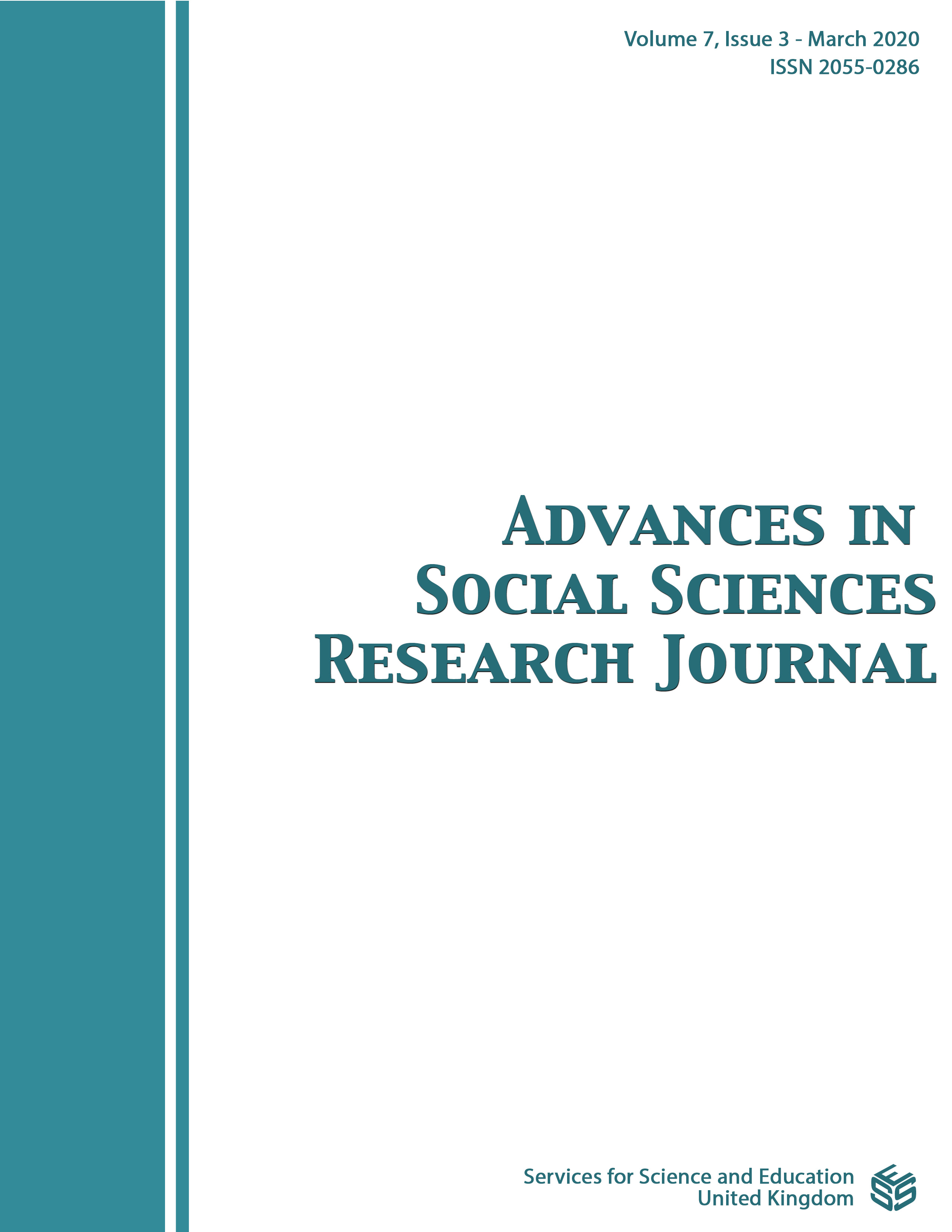Information Communication Technology (ICT): The New Frontier of Child and Youth Care (CYC) Practice
DOI:
https://doi.org/10.14738/assrj.73.7996Keywords:
child and youth care, course-based research, ICT, qualitativeAbstract
This exploratory course-based research investigates the use of information communication technologies (ICT) by child and youth care (CYC) students in their interactions with children, youth, and families. Data were collected through an online mixed closed- and open-ended survey. The data analysis consisted of a descriptive statistical analysis of the survey’s closed-ended questions and a thematic analysis of the survey’s open-ended questions. The findings revealed that CYC students are using ICT in their interactions with children, youth, and families and that the potential positive use of ICT should be addressed in a more significant way in the classroom.
References
Allyn, D. A. (2013). Course-based undergraduate research: It can be accomplished! Journal of Physical Education, Recreation & Dance, 84(9), 32–36.
Arago, T., Ali, S., Dassouki, T., Massner, S., Mendiola, D., Po, J., Sun, K., & Bellefeuille, G. (2019). Social media and 21st century child and youth care practice. Journal of Education, Teaching and Social Studies, 1(1), 12-20.
Barak, A., & Grohol, J. M. (2011). Current and future trends in Internet-supported mental health interventions. Journal of Technology in Human Services, 29, 155–196.
Bellefeuille, G., Ekdahl, C., Kent, L., & Kluczny, M. (2014). A course-based creative inquiry approach to teaching introductory research methods in Child and Youth Care undergraduate education. International Journal of Teaching and Education, 2(2), 1–9.
Bellefeuille, G., & Jamieson, D. (2008). A Pedagogical Response to a Changing World: Towards a Globally-Informed Pedagogy for Child & Youth Care Education and Practice. Children and Youth Services Review, 30, 717-726.
Bosnjak, M., Neubarth, W., Couper, M. P., Bandilla, W., & Kaczmirek, L. (2008). Prenotification in web-based access panel surveys: The influence of mobile text messaging versus e-mail on response rates and sample composition. Social Science Computer Review, 26, 213–223.
Boydell, K. M., Volpe, T., & Pignatiello, A. (2010). A qualitative a study of young people’s perspectives on receiving psychiatric services via televideo. Journal of the Canadian Academy of Child & Adolescent Psychiatry, 19(1), 5-11.
Brezinka, V. (2008). Treasure hunt: A serious game to support psychotherapeutic treatment of children. Studies in Health Technology and Informatics,136, 71-7.
Burleson, J.A., & Kaminer Y. (2007). Aftercare for adolescent alcohol use disorder: Feasibility and acceptability of a phone intervention. The American Journal on Addictions, 16, 202–205.
Calear, A. L., Christensen, H., Mackinnon, A., Griffiths, K. M., & O'kearney, R. (2009). The YouthMood Project: A cluster randomized controlled trial of an online cognitive behavioral program with adolescents. Journal of Consulting and Clinical Psychology, 77(6), 1021 -1032.
Corley, K.G., & Jansen, K.J. (2000). Electronic survey techniques: Issues and implications. Paper presented at the academy of management annual meeting, Toronto, Canada. Retrieved from https://www.researchgate.net/publication/267836472_E-Survey_Methodology
Creswell, J. W. (2013). Qualitative inquiry and research design: Choosing among five approaches (3rd ed.) CA: Sage: Thousand Oaks.
Cunningham, M., & Wuthrich, V. (2008). Examination of barriers to treatment and user preferences with computer-based therapy using the Cool Teens CD for adolescent anxiety. E-Journal of Applied Psychology, 4(2), 12 -17.
Devine, S., Bull, S., Dreisbach, S., & Shlay J. (2014) Enhancing a teen pregnancy prevention program with text messaging: engaging minority youth to develop Top® Plus Text. Journal of Adolescent Health, 54(3), 78–83.
Finn, J. (2006). An exploratory study of email use by direct service social workers. Journal of Technology in Human Services, 24, 1–20.
Garfat, T. (2004). A child and youth care approach to working with families. New York: Haworth Press.
Gharabaghi, K. (2010). Three profoundly stupid ideas. CYC-Online. Retrieved from http://www.cyc-net.org/cyc-online/cyconline-aug2010-gharabaghi.html.
Gowen, K., Deschaine, M., Gruttadara, D., & Markey, D. (2012). Young adults with mental health conditions and social networking websites: Seeking tools to build community. Psychiatric Rehabilitation Journal, 35(3), 245–250.
Harrison, M., Dunbar, D., Ratmansky, L., Boyd, K., & Lopatto, D. (2010). Classroom-based science research at the introductory level: Changes in career choices and attitude. CBE Life Sciences Education, 10(3): 279–86.
Hunter, J., Corcoran, K., Leeder, S., & Phelps, K. (2013). Is it time to abandon paper? The use of emails and the Internet for health services research—A cost-effectiveness and qualitative study. Journal of Evaluation in Clinical Practice, 19, 855–861.
Kiene, S.M., & Barta, W.D. (2006). A brief individualized computer-delivered sexual risk reduction intervention Increases HIV/AIDS Preventive Behavior. Journal of Adolescent Health, 39(3), 404-410.
McCoyd, J. L. M., & Kerson, T. S. (2006). Conducting intensive interviews using email: A serendipitous comparative opportunity. Qualitative Social Work, 5, 389–406.
Rice, E., Lee, A., & Taitt, S. (2011). Cell phone use among homeless youth: potential for new health interventions and research. Journal of Urban Health, 88, 1175–1182.
Roy, H., & Gillett, T. (2008). Email: A new technique for forming a therapeutic alliance with high-risk young people failing to engage with mental health services? A case study. Clinical Child Psychology and Psychiatry, 13, 95-103.
Sappleton, N. (2013). Advancing research methods with new technologies. Hershey, PA: IGI Global.
Yin, R. K. (2013). Case study research: Design and methods (5th ed.). Sage Publications, Los Angeles.
Downloads
Published
How to Cite
Issue
Section
License
Authors wishing to include figures, tables, or text passages that have already been published elsewhere are required to obtain permission from the copyright owner(s) for both the print and online format and to include evidence that such permission has been granted when submitting their papers. Any material received without such evidence will be assumed to originate from the authors.






